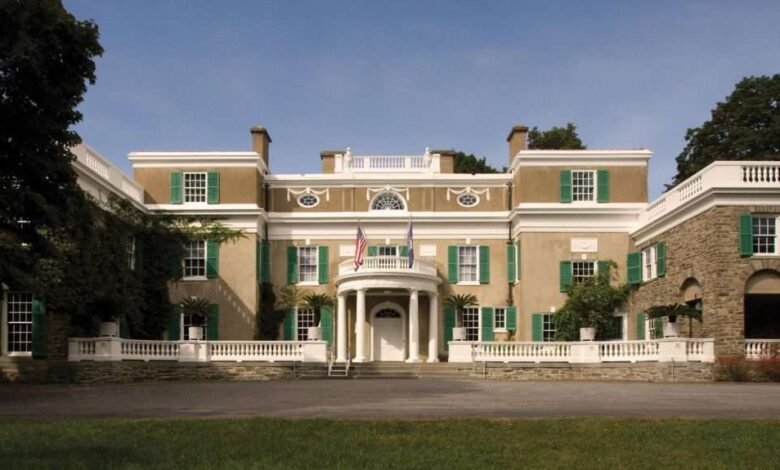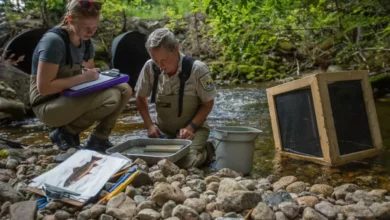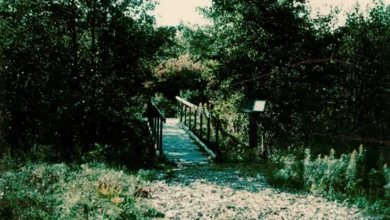The Day FDR’s Hyde Park Mansion Caught Fire


 After President Franklin Delano Roosevelt lost the use of his legs, his son Eliott wrote that his father had a fear of fire. He regularly practiced escaping from their family home, Springwood, in Hyde Park, Dutchess County, NY, in the event that there would be a fire.
After President Franklin Delano Roosevelt lost the use of his legs, his son Eliott wrote that his father had a fear of fire. He regularly practiced escaping from their family home, Springwood, in Hyde Park, Dutchess County, NY, in the event that there would be a fire.
During these drills, Roosevelt would crawl on the floor, pulling himself, pretending there was a fire to escape.
This fear was intense enough that he never electrified the freight elevator he used to hoist himself to the second floor. His fear was that in the event of a fire, the electricity would fail and cut off his only escape route from his bedroom.
In an effort to “fireproof” the oldest section of the house, where Roosevelt’s childhood bedroom was located, boric acid was added to the insulation as a fire retardant.
Roosevelt’s home never suffered a large fire while he was alive. However, one week before the one-hundredth anniversary of Roosevelt’s birth on January 23, 1982, the nation almost lost his Springwood mansion.
Only firefighters and site staff, some of whom were also firefighters, helped minimize the damage to the structure and the irreplaceable artifacts located in the home.
Some believed the fire to have been caused by private electrical contractors replacing old electrical wires in the upper part of the mansion, possibly creating instability in other old wires they had not yet reached.
After they left, an automatic alarm sounded at 12:15 am. A fire had started in the attic, possibly smoldering for hours.
When the first fire apparatus arrived on that bitterly cold night, they were greeted with visible fire shooting through the mansion’s roof. A second alarm was transmitted for all available manpower.
Eventually, 250 firefighters from 10 different departments, according to The New York Times, arrived on the scene. The below-zero temperatures complicated firefighting efforts as the water froze and pumps had trouble keeping up due to the temperature.
Even before the fire department arrived, National Park Service employees and concerned local citizens also rushed to the scene. Even though the fire chief of Hyde Park ordered all non-fire personnel not to enter the home, this directive was promptly ignored.
While the fire continued to burn in the oldest part of the home, curators and others continued to rush in and out of the burning mansion, grabbing whatever artifacts they could secure. This included paintings and even the Dresden chandelier in the music room. The president’s father had purchased it.
Some firefighters eventually helped with securing objects in the house, some of which were as old as 156 years. The New York Times reported that a “curator tossed a tarpaulin over the bed in which Roosevelt was born.”
As water, smoke, and fire grew in intensity, the ceiling in the bedrooms where King George VI of England stayed in 1939 collapsed.
Firefighters ordered everyone out of the building, as it was feared that roofs would collapse under the weight of “100,000 gallons of water” being poured onto the flames.

 So much water ended up in the home that there were over two inches of it on the upper floor, which formed a waterfall down the stairway until it froze like a slide. The fire was successfully contained in the oldest part of the home and fortunately did not extend to the 1915 portion of the home.
So much water ended up in the home that there were over two inches of it on the upper floor, which formed a waterfall down the stairway until it froze like a slide. The fire was successfully contained in the oldest part of the home and fortunately did not extend to the 1915 portion of the home.
Firefighters declared the fire under control by 3 am, and the extent of the damage became clearer at dawn. A 75-foot section of the roof was destroyed and ten rooms were damaged.
The fire department would be dispatched again during the day to extinguish hot spots. Although private electrical contractors had been in the house the day prior, an investigation conducted by law enforcement and the Hyde Park fire chief issued a determination that the contractors were not responsible for the fire.
According to an article in the Dutchess County Historical Society Journal in 1982, what started the fire was most likely a “short in old electrical wiring between the third floor ceiling and the roof.”
Fortunately, the training and disaster management pre-planning conducted by the Hyde Park Fire Department helped save the home from complete destruction.
The anniversary of Roosevelt’s birth went on as planned. Visitations to the home were limited because restoration of the mansion had already begun.
Roosevelt’s son and namesake, Franklin Delano Roosevelt, Jr., raised money for his childhood home and Congress later appropriated 2 million dollars for the reconstruction of the part of the home damaged by fire.
Restoration was completed and the home once again looks as it did during Roosevelt’s lifetime.
Illustrations, from above, courtesy NPS: Springwood, the home of FDR, now Franklin D. Roosevelt National Historic Site; and fire damage from the 1982 fire.
Source link





